Curious to see if there were Peruvian restaurants of note on the far south side of Buenos Aires, I picked the Nueva Pompeya barrio and did a google, yelp, and foursquare search. Three spots popped up, one of which turned out either not to exist, or hasn’t existed for a long time, or simply was misnamed in the searches – “Sur Latino”, but there’s a different Peruvian restaurant at the address which has been there for many, many years apparently. The other two I verified were there, and in the course of doing so, stumbled across another – they’re all within a two block stretch along Av. Saenz. There are more in the area, but since this quartet happen to be within a two block stretch, I’m grouping them together. I decided that I would try two things at each place – whatever the soup of the day was, and my waiter’s personal favorite, or his/her recommendation of the best dish on the menu.
The first place, and furthest out of the four, is Lo de Ova, Av. Saenz 695. This is the place that was listed as Sur Latino, perhaps it was a statement of the type of food, or something. Who knows? It’s a bit shabby, and the place smells like a cat’s litterbox. Not exactly welcoming. It’s the sort of place that I’d have expected that pretty much all the customers would be eating the daily menú, going as cheap as possible, but out of a couple of dozen people, only one table was doing so. Everyone else was ordering from the a la carte menu.
Being a Monday, the soup included with the daily menú was shambar, the wheatberry soup of the north of Peru. I asked if I could get just a small bowl of it, and the waiter said yes. A fairly good, richly flavored shambar, with only a little bit of wheat – this one was heavier on white beans and chickpeas. Also, interestingly, a nice piece of osso buco in the bowl rather than the usual bits of cheap meats and things like tripe, intestines, and/or cheap cuts of meat. Really quite good, and at 50 pesos, less than $2, a bargain.
The waiter recommended highly their chicharrón de pollo, also a personal favorite. Not bad, but not anything special. A little bland, though nice and crisp, and almost all of the chicken was breast meat and boneless. A huge, huge portion for 270 pesos ($7 and change) – easily the equivalent of most of a whole chicken, plus an equal quantity of fries, and a good sized salad. Enough for 3-4 people to share. I ate the salad, tried the rest, and brought the chicken and fries home for a shared meal later. Overall the place is good, but nothing special, and they need to do something about that smell – I wouldn’t make the trip out there again just to eat here. (***)
This is the one I stumbled across, on the same block as the one above. Máncora, Av. Saenz 611 looks a bit like a cafeteria or lunchroom, with little to no decoration. The general consensus seemed to be that it’s cheap, the portions are plentiful, the waiter is one of the friendliest around, and lots of folk pimped for the pollo a la brasa, though that seemed to be because it was a cheap option. And, indeed the waiter was quite friendly, and efficient, and was happy to recommend his favorite dish on the menu.
Being another Monday, the soup of the day was once again shambar. This version far richer than the one above – packed with wheatberries and a scattering of chickpeas. There was a fair amount of cuero, pork skin in it, that had near melted to buttery softness, and two pieces of meat, though they turned out to be mostly bone. A very strong hierbabuena note… “minty”. A little pricier than down the block, at 70 pesos or $2., but not significantly so, at least for my budget.
The waiter’s choice was the corvina frita, a fried “white croaker” fish. I have to admit, it didn’t occur to me that the plate, especially at a mere 200 pesos, or $5, would be a whole fried fish – I was expecting a lovely fillet, not a 1 kg fish. But, I have to admit, he was right on the money – I can’t swear it’s the best dish on the menu, but it was excellent – cooked perfectly, with crispy skin, and delicate, flaky flesh, lightly seasoned, and served with a mound of boiled potatoes, rice, and onion salad. Add a little hot sauce (not very hot for my tastes) and it was a perfect lunch. Well, about a third of it was. The rest of it I carefully removed from the skeleton and had it packaged up with the accompaniments to bring home for Henry. Worthy of a future visit, at least if I was in the area. (****)
Next up, a block south of the other two, is a place that seems to get very mixed reviews, Juanita y Paul now La Perla (same owners, same menu, new name), Av. Saenz 575. Some of it seems to be a particularly contentious relationship with past employees, who apparently are incensed enough to actually put some time and effort into trashing the place, but it’s not easy to sort through. In general, the consensus seems to be, “cheap and cheerful, but somewhat small portions”. Though, given the size of the main courses at the previous two spots, that seemed like it might be a blessing. The place isn’t strictly Peruvian, it’s a chifa, which is sort of the Peruvian equivalent of a diner, and offering up a mix of Peruvian, Bolivian, Argentine, Paraguayan, and… Chinese dishes. It still leans predominately towards Peruvian, with about half the menu devoted to that cuisine.
It wasn’t a Monday, so shambar wasn’t the soup, but, quite similar, the soup of the day was mote de trigo, basically a soup made with the same wheatberries, but more vegetables, no pork skin, beans or chickpeas, nor hierbabuena. It was pretty tasty, and I didn’t leave any behind. In some ways, I think I prefer this soup to shambar, just because it’s not quite so heavy. At 70 pesos, it wasn’t any cheaper than the other two spots, and just as good.
When I asked my waitress about the best dish, or her favorite, she responded with, “most people order either the daily menu or chaufa (fried rice)”. I asked if the chaufa was the best dish on the menu and she replied, “no, but it’s pretty much the cheapest and feeds like two people”. Pressing again for her fave or the best, she opined that they were really well known for their pollo a la brasa, and that she thought it was better than the other spots in the ‘hood offered.
So, pollo a la brasa – rotisserie chicken, lacquered in spices, and served over french fries and with a side salad. I’d have to say, in comparison to the dish at many a Peruvian spot, it is a pretty skimpy plate – it was one of the smallest leg/thigh quarters I think I’ve seen, and the salad was barely anything. The fries – undercooked, still raw in places, and soggy with oil, unsalted, and no salt to be had. The salad was doused in a creamy dressing, of which there was more than there was lettuce. The chicken was tasty, just small. The hot sauce – awfully mild. A bit disappointing for both the “best dish” on the menu and for 200 pesos. I have to admit, I lean towards the naysayers. (**)
And, on to the last, Costa Verde, Av. Saenz 496. A bit dingy, in fact, everything was a bit depressing other than a cute waiter. I proferred my usual question, only to get the surprising response that he’d never really tried any of the food, it wasn’t allowed, though he once tried a piece of the pollo broaster which wasn’t bad. So I went by online reviews, which seemed to come down on either the pollo a las brasas or the arroz con mariscos. Since I’d just recently had the chicken dish at the last place, I decided to go with the shellfish rice.
Soup of the day, back to being a Monday, shambar. Pretty much nothing more than colored water with a lot of salt, something obviously to make it orange-red, and a few chickpeas, white beans, and maybe a couple of wheatberries, somewhere lurking below the surface. Some squares of pork skin, barely tender, and a pork knuckle which had had all the meat removed from it. 70 pesos, and not worth the $2 that represents.
Inedible. Seriously. Inedible. So salty my tongue shriveled up and tried to hide. The scattered few bits of shrimp and calamari so overcooked they’d do more damage than a rubber bullet. The mussels dried out to the point they had a crackly skin. The clam was raw and still partially frozen. And to add insult to the injury of 280 pesos (about $7)…
…after pushing it about on the plate looking for maybe, just maybe, a couple of bits of seafood to eat, I started finding black hairs, about 2″ long in it. I pushed the dish away, signaled waiter-boy. He got the woman who seemed to half of the couple running the place, she started off with, “what’s your problem?” Then grabbed the plate and went into the kitchen, not to return. I finally went up to the counter, her other half demanded full payment. I tried to protest and got a, “I don’t know what you’re talking about.” So I paid, but can’t recommend more strongly that no one ever set foot in this place. (*)
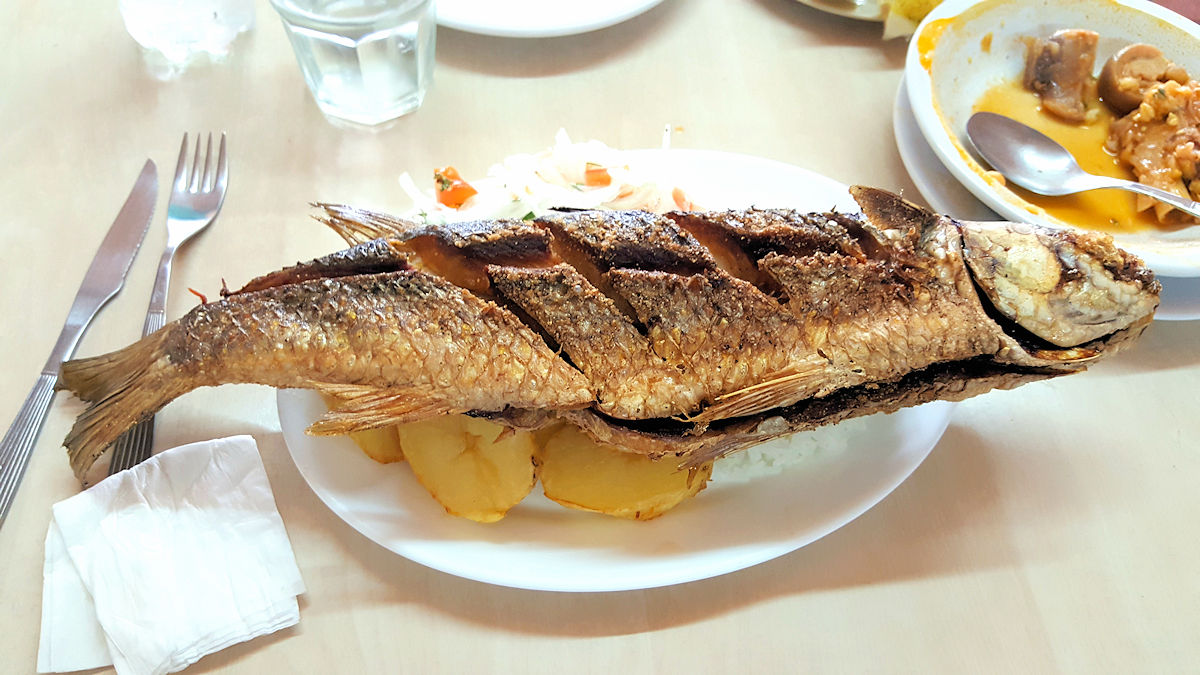
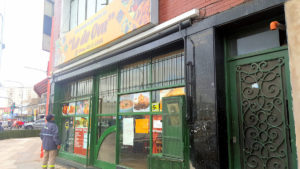
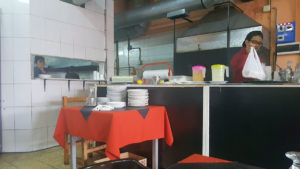
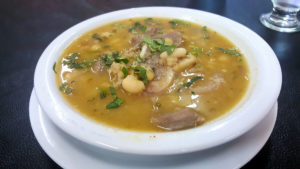
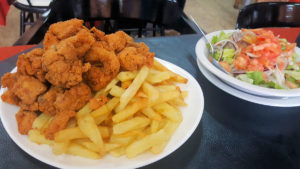
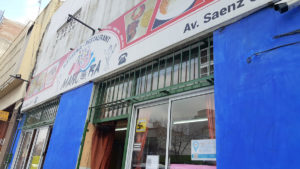
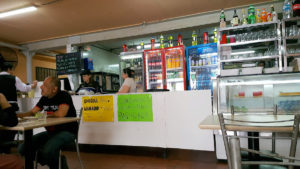
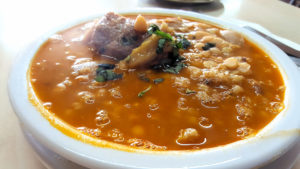
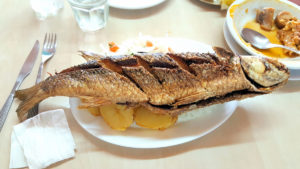
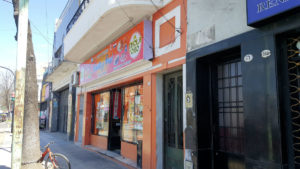
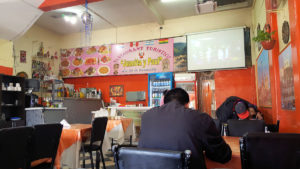
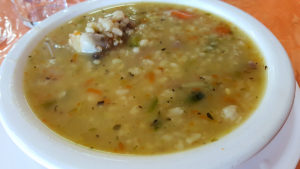
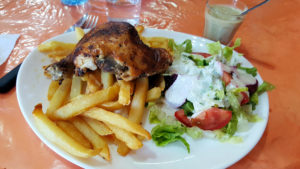
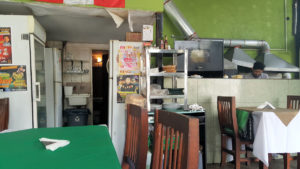
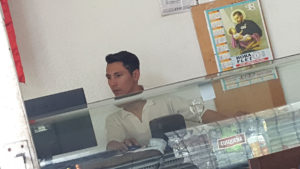
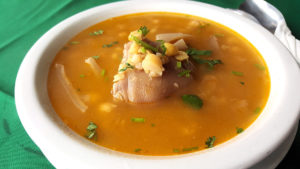
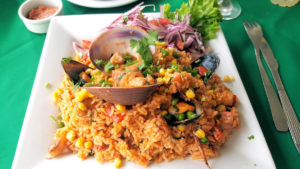
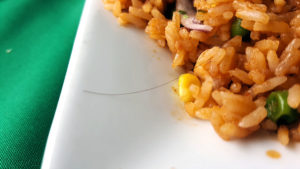
Hola buenas noches gracias por conocer los ricos platos de la gastronomia peruana y china pero lastima que no pudo probar nuestra comida en restaurante que esta abraham j. luppi 933 media cuadra de av. saenz nosotros haciamos comida peruana pero nuestra especialidad es la comida china.
Victor – por que una lástima? No es como no puedo todavía probar sus platos. No sabía que existe tu restaurant. Ahora si.
Victor – me fui a esa dirección, y habia un chiquito restaurante allá. Pregunté sobre platos peruanos y/o chinos y el hombre que estaba me dijo “este no es un lugar para ti, vete”, y me negó para servir. También, me dijó que no conoce ningún Victor. Eso, si, es una lástima.
[…] weeks shuttling back and forth to Nueva Pompeya, a barrio on the southwest side of Buenos Aires, checking out a stretch of Peruvian restaurants along Av. Saenz that had caught my attention. I noted that there were more spots, both along the avenue and on side […]
[…] This place wasn’t open that last time I was out doing my Saenz of Peruvian Cooking set (1 and 2). I had actually been planning to go to a small cevicheria a half block from here, but it […]